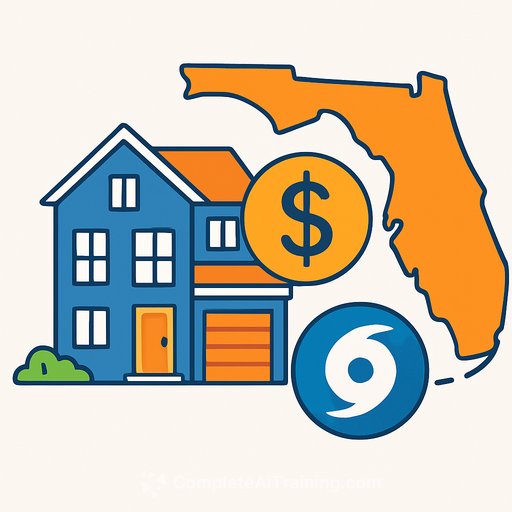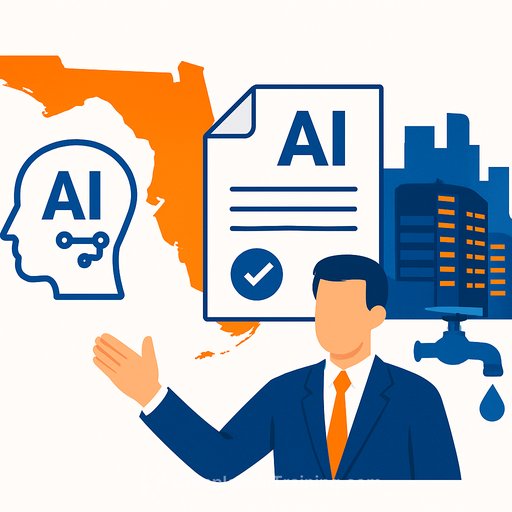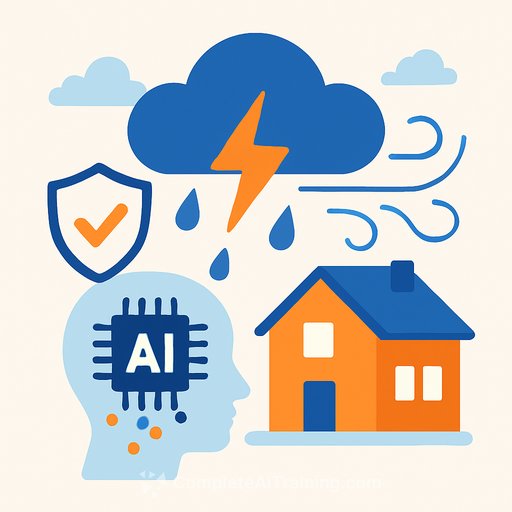AI-Powered Home Insurance Startup Expands in Risky Markets
Stand Insurance raised $35 million in a Series B to scale its AI-driven homeowners coverage. The company already insures properties totaling $1 billion in wildfire-prone California and plans to enter Florida, where hurricane exposure has widened the protection gap.
The pitch: use remote sensing plus homeowner-supplied data to assess risk at the property level, prescribe mitigation, and price accordingly. Management says the insurance line is profitable, though no details were disclosed.
How Stand Says Its Model Works
- Inputs: satellite and aerial data, and homeowner details such as window materials and backyard tree species.
- Analysis: AI simulates wind, heat, embers, and other factors to estimate likely damage patterns.
- Output: a prioritized mitigation plan. Customers who complete actions qualify for coverage and discounts.
"That basically tells us what are the vulnerabilities that you need to remedy," said Dan Preston, cofounder and CEO. Backers include Eclipse (more than $5 billion AUM), Lowercarbon Capital, and Inspired Capital.
Where They're Playing
- California: focus on homes valued between $2 million and $10 million, a segment underserved by the state's residual market as the FAIR Plan caps coverage at $3 million.
- Pricing example: a $5 million home in Pacific Palisades could run about $35,000 annually with Stand, versus roughly $46,000 from a non-admitted carrier this year, per the company.
- Florida (planned): expansion into a cat-exposed market amid carrier exits and rising E&S share.
Why It Matters for Insurance Professionals
- Segmentation and incentives: More granular rating tied to verified mitigation can reduce loss cost if adoption and quality control are real. The operational challenge is proof-of-compliance and ongoing maintenance.
- Model governance: Property-level predictions are harder to validate than portfolio-level loss picks. Expect scrutiny on calibration, drift, explainability, and adverse selection at the edge cases.
- Concentration risk: Entering markets where incumbents pulled back heightens tail exposure. Reinsurance structure, aggregate limits, and capital buffers will define durability through an extreme event.
- Neighbor effects: In dense neighborhoods, one hardened home doesn't break the chain of loss. Community-level mitigation and defensible space matter as much as individual upgrades.
- Regulatory lens: If offered on an admitted basis, filings will test transparency of rating factors. On E&S, speed is higher but reputational risk rises if pricing or claims handling is seen as opaque.
- Customer outcomes: Clear action plans plus meaningful credits can shift behavior. The value hinges on accurate peril scoring and practical, affordable retrofits for high-value homes.
Market Context
Climate volatility is pressuring capacity. This year's Los Angeles wildfire was estimated at $164 billion in losses, prompting more carriers to retrench from high-risk ZIP codes.
Insurtech has attracted over $60 billion since 2012, with roughly a quarter tied to AI-focused startups, according to Gallagher Re and CB Insights. Large insurers are also adopting machine learning to sharpen peril scoring and triage underwriting.
Key Risks and Caveats
- Model variance: Different AI models can produce wide-ranging outputs. "AI models tend to do better when you're looking at aggregated losses, not the loss for one specific house," said Rachel Davidson, University of Delaware.
- Claims-paying capacity: "There is a risk that these AI-driven insurance startups enter a market where traditional insurers have exited," said Jesse Keenan of Tulane University, which could raise exposure concentration and create strain in a big event.
- Execution risk: Pricing sophistication must be matched by field verification, supply-chain access for mitigation work, and service quality during CAT surge.
Metrics to Watch
- Percent of book with completed mitigation actions and verified upkeep.
- Delta between indicated and actual losses at property and ZIP-code levels across wildfire and wind perils.
- Reinsurance cost as a share of premium, attachment points, and aggregate protections.
- Frequency of non-renewals or moratoriums by county versus peers.
What's Next
- Florida launch timeline, admitted vs. E&S strategy, and regulatory feedback.
- First full CAT season performance post-expansion and any re-rating moves.
- Depth of mitigation partnerships (contractors, arborists, materials suppliers) to reduce friction for homeowners.
Pricing fairness is the promise: "If tech can do a better job of distinguishing riskier homes from safer homes and offer differentiated premiums accordingly, it can offer pricing that is more fair and has the potential to encourage homeowners to adopt more risk mitigation," said Shan Ge of NYU Stern.
Level Up Your Team
If your underwriting or product teams are integrating machine learning and remote sensing, structured upskilling helps. See practical training paths by role at Complete AI Training.
Your membership also unlocks:






